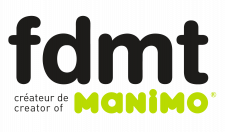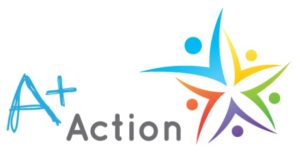Regular practice, even daily, of physical activity and sports is fundamental and contributes to the overall development of the child. However, what are the recommended requirements and the overall objectives for young children between ages 0 and 8 years?
CREDIBLE SOURCES
Several recognized associations or organizations have developed concrete recommendations in recent years to guide parents and stakeholders in the education and sports environments. For the purposes of this column, I selected two credible organizations that are closest to my values in sport and physical activity in young children. These organizations are the Canadian Sport for Life (Long Term Development Framework participant/athlete, 2014) as well as the Canadian Society for Exercise Physiology (Guidelines for physical activities, 2012). Overall, these two organizations are pursuing a common mission in order to encourage Canadian leaders in the fields of education, recreation, sport and health to share a vision to promote a healthy and active lifestyle. Here is a synopsis of these two organizations in which I bring my additional professional experiences in recent years.
ACTIVE CHILD STAGE BETWEEN 0 AND 6 YEARS
General sport and physical activity objectives:
Provide a safe and rich environment for free motor exploration (mat, comfortableclothing, small equipment to handle);
Stimulate the principal movement components of motor development (muscle tone,balance, coordination, etc.) by individual activities that are playful in nature.
Develop fundamental motor skills (throwing, running, swimming, skating ,jumping,rolling, etc.) through four environments (soil, water, air, ice or snow );
Initiate certain physical and organized sports;
Prioritize free play outside if possible and provide structured activities ;
Provide opportunities to explore the child’s potential in safe environments;
Ensure that the focus of physical and sport activities is on FUN.
Recommendations:
Swimming Lessons
Gymnastics Classes
Other motor activity classes
Free play alone or with parents
PLAY STAGE OF SPORT BETWEEN AGES 6 – 8
General sport and physical activity objectives:
Stimulate other motor components of motor development (agility, strength, speed,endurance, etc.) through individual activities that are playful in nature;
Develop fundamental motor skills (throwing, running, swimming, skating, jumping,rolling, etc.) through four environments (soil, water , air, ice or snow ) ;
Develop basic sports skills in several disciplines (minimum of 3) depending on the season(no need whatsoever for structured activities);
Allow more time for free play outdoors if possible;
Introduce simple rules of fair play and ethics of sport;
Ensure that the focus of physical and sport activities is on FUN.
Recommendations:
Swimming Lessons
Gymnastics Classes
Games or sports with running (soccer, baseball, basketball, tennis)
Games and winter sports (skating, skiing, snowboarding, hockey)
Free play alone or with parents
PHYSICAL ACTIVITY TIME GUIDELINES FOR AGES 0 – 5
Between 0 and 1 year: Being active several times/day through interactive games on theground.
Between 1 and 4 years: 180 minutes divided up during the day, regardless of theintensity.
Between 4 and 5 years: An increase to at least 60 minutes of continuous activity.
PHYSICAL ACTIVITY TIME GUIDELINES FOR AGES 5 – 8
Between 5 and 8 years: Minimum 60 minutes/day of physical activity of moderate tohigh intensity (child is hot, sweaty, breathless and more red).
Able to practice or play at least 60 continuous minutes. Alternatively, accumulate thattime with activities at school, home and through structured activities.
High intensity activities at least 3 times/week. (Ex. running, swimming, hockey, skiing,etc.).
Activities that strengthen muscles and bones at least 3 times/week (Ex. skipping,climbing, gymnastics, cheerleading, etc.).
Recommendations:
Offer sports and physical activity choices based on the interest and temperament of thechild.
Depending on your region, choose sports and physical activities that are numerous andaffordable. Let your child discover his own interests.
To attain moderate to high intensity activity, the child often needs an adult to initiateor direct the activity.
CONCLUSION
At first glance, you might be surprised by the high number of objectives and guidelines for young children. I advise you not to put too much pressure to try to achieve these standards with your children. You are probably doing more than you think. Whether you are a parent, educator, teacher or coach, the main thing is that you are informed and sensitized so that all stakeholders around the child share the responsibility for daily movement through a variety of physical activities and adapted sports.
Keeping in mind these objectives and guidelines, you will gradually evolve your parental or professional practice depending on your situation. Resistance to change is quite natural in humans, but do not forget to think about the child’s future. The research clearly demonstrates the positive effects of a healthy lifestyle when it is developed early in childhood. As a role model, you have the responsibility to guide the child through the objectives and guidelines.
In closing, do not forget the most fundamental element of this column is to know that the idea of FUN should be highly valued in whatever sport and physical activity the child engages in.
Joël Beaulieu, PHD. (C)Motor Consultant, A + Action-jb@aplusaction.com



Leave A Comment